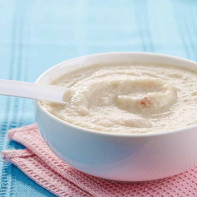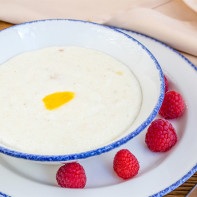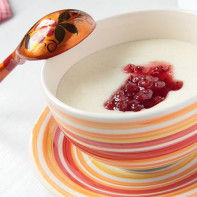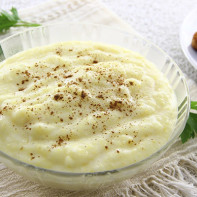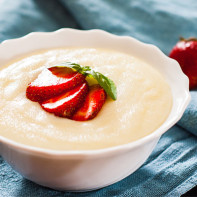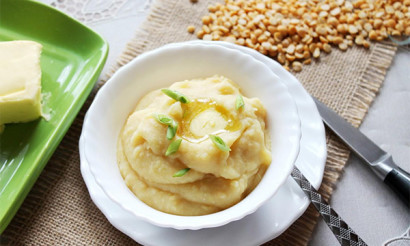How to cook semolina: 20 recipes
You can meet semolina not only in nurseries and kindergartens. It is widely used in dietary nutrition. The dish comes in different thicknesses, with and without fillers. Housewives and professional cooks use the groats to prepare semolina, pancakes, various desserts and even cutlets. Manna porridge is necessarily included in the diet of patients undergoing rehabilitation in the postoperative period, as well as patients with gastrointestinal problems.
- What is semolina?
- What is it made of?
- Types of
- What is useful for semolina
- What is semolina?
- The semolina composition
- Interesting facts about semolina
- How to cook semolina properly
- How to boil semolina: Recipes
- With milk
- With water
- On powdered milk
- With pumpkin
- With banana
- With cottage cheese
- With raisins
- With apples
- Whipped with berries
- With sourdough and berries
- With chocolate
- Dzikka
- With raspberries or strawberries
- For babies
- Upma
- In the multicooker
- In the microwave
- Mannik
- Semolina meatballs or meatballs
- Semolina pudding
- What do you eat semolina with?
- At what age children can be given semolina
- The benefits of semolina for children
- The Harm of Semolina for Children
What is semolina?
Not so long ago, semolina in our country was considered an expensive product that only people with a good income could afford to buy. The reason for the high cost was a complex technological process of processing the grain and its subsequent grinding. Semolina is obtained by graded milling of hard and soft wheat grains or a mixture of both.
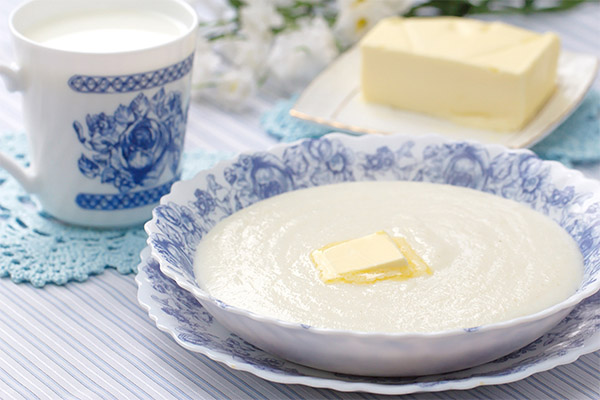
At the beginning of the XX century technology changed. This made it possible to reduce the cost of semolina production. It became available to a wide range of consumers product. Semolina is produced in flour mills in several stages. During deep milling corn is obtained flour, semolina and shell large and small.
What is it made of?
Cereal obtained in the course of grinding is the initial product for semolina. It is separated from the flour by sifting. Grain particles vary in color depending on the type of wheat. Soft wheat makes white grits, while hard wheat makes creamy or yellowish grits. Blended formulas consist of grits of various shades.
The most common types of semolina on store shelves are blended cereals. They are obtained by mixing semolina from soft and durum wheat in an 8:2 ratio. The average particle size is 0.5 mm.
Types
The classification of semolina depends on the original variety of wheat. There are three grades of semolina: "T", "M", "TM". This marking is applied to the packaging of the product. The letters indicate the type of grain used to make the grits. The basis of the mixed semolina "TM" is semolina, resulting from the grinding of soft varieties of wheat. Only 20 per cent of durum wheat is added.
The composition of the final product depends on the type of wheat used to make semolina. M-grade semolina is rich in starch. It contains a small amount of fiber and protein. Semolina "T" contains a lot of fiber and protein. The amount of starch in it is insignificant.
How is semolina useful?
There are constant debates around semolina. Some talk about the benefits of the product, others say that the value of semolina is exaggerated. The younger generation is convinced that there is nothing useful in this porridge, except only empty calories. Representatives of the older generation, on the contrary, consider semolina a very useful product, which has a beneficial effect on the human body.
Let's get to the bottom of this issue and take an objective look at the facts. The composition of the product is rich in vitamins B and E. It contains important substances for the human body: calcium, phosphorus, potassium and others. Despite the fact that 100 g of semolina contains about 330 kcal, when it is boiled, the caloric value is significantly reduced.
Lenten porridge with water contains only 100 kcal in 100 g of the product. Its great advantages are:
- The ability to quench the feeling of hunger as quickly as possible and for a long time.
- Restore the energy lost by the body.
- Increase efficiency.
- Stimulate mental alertness.
- Reduce BP.
Nutritionists include semolina in the diet of people suffering from kidney failure, because of the high content of fiber in the product. Protein-free foods are recommended for such patients. In the diet of postoperative and debilitated patients, semolina is included because of its ability to be easily digested by the body. It does not put a strain on the esophagus.
Once in the stomach, the porridge envelopes its walls, reducing pain in people suffering from gastritis. It adsorbs toxins and impurities, inhibiting pathogens. Pregnant women include semolina in their diet because of its ability to gently cleanse the intestines.
What is semolina?
The semolina obtained by grinding the grain has particles of 0.25-0.5 mm. In cooking, it is used to prepare dietary porridge, baking, sauces. As a binding ingredient semolina is added to various kinds of stuffing. The peculiarity of semolina is that it is digested only in the lower intestine. Like all foods, it has its unconditional pros and cons, which you need to know and consider, including the product in your diet.
Pros:
- Easy and quick to cook.
- Combines with most foods.
- Well digested.
- Does not irritate the gastrointestinal tract and is a good preventive agent for the development of its pathologies.
Cons:
- Rather high caloric content;
- Insufficient amounts of vitamins and trace elements.
Manka will be of great benefit to people recovering from various infectious and other diseases, operations. It is useful to eat it for the elderly and those who have digestive and gastrointestinal problems. Nutritionists recommend feeding it to children who are underweight.
Healthy people do not benefit from it, but it can add extra pounds to their weight. The product contains gluten, which causes intolerance in a large proportion of people of different ages. It is a hereditary disease called "celiac disease. In Europe it occurs in 1 person out of 800.
In patients with celiac disease, gluten depletes the intestinal mucosa, resulting in impaired absorption of beneficial vitamins and substances. Diarrhea is the result. It is not necessary to refuse to eat semolina completely, but it is not necessary to make it an everyday dish in the diet of adults and children. In children it can cause the development of rickets.
The composition of semolina
Phytin contained in the groats is useful for people of advanced age. It prevents excessive mineralization of the body and normalizes the work of the intestine. The disadvantage is that phytin binds calcium from other foods, thus depriving the body of bone-building material. This is worth remembering for parents who make porridge the basis of their children's diet.
Children under one year of age should not be given semolina because of the gliodin. This substance interferes with the ability of the intestine to absorb useful substances. Gluten, which is found in large quantities in cereals, can cause allergies. The following substances play an important role:
- Vitamin B5 - stimulates metabolic processes, the synthesis of hormones and hemoglobin. Thanks to him, amino acids and sugars are absorbed in the intestine.
- Vitamin PP - an important element for energy metabolism. Deficiency of vitamins in this group can cause loss of tone of the skin, nervous system and gastrointestinal disorders.
- Silicon stimulates the synthesis of collagen.
- Cobalt - activates the enzymatic metabolism of fatty acids and is involved in the metabolism of folic acid.
- Manganese - actively involved in the formation of bone and connective tissues.
Interesting facts about semolina
In ancient Russia, semolina began to be produced in the 12th century. In Tsarist Russia, cooked from it porridge was considered the food of aristocrats. At the end of the 19th century, Russian restaurants began to serve the famous Guryevskaya kasha. It was cooked from semolina. According to one version, the authorship of the recipe belongs to Zakhar Kuzmin, a serf cook of Count Dmitry Guriev himself. At that time, the porridge was served as a dessert.
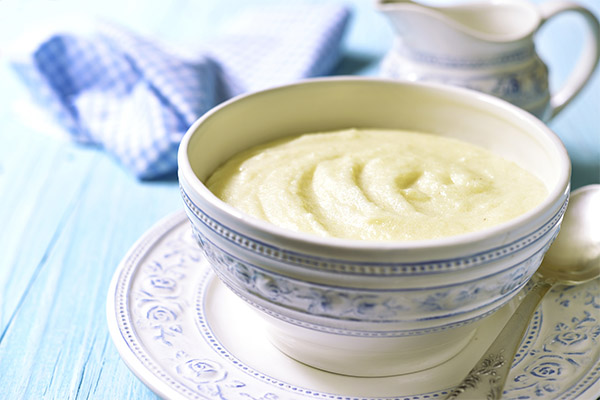
Once Guryev treated a retired major Yurasovsky to porridge prepared by his cook. As a person close to the royal court, well versed in gastronomic delights, he appreciated the culinary masterpiece of the serf cook. Without thinking twice, Yurasovsky bought the recipe from Guriev. So the porridge was named after the count - Guryevskaya.
Thanks to the retired major, it made its way into the imperial kitchen. Alexander III was its great admirer. Very quickly it gained popularity in Russian restaurants. For the common people semolina became available only in Soviet times. Russia is the only country in the world where this product is widespread and popular.
How to cook Guryevskaya porridge correctly
Nowadays, porridge is prepared according to several recipes. The simplest recipe, in addition to half a cup of semolina, includes:
- 1.2 liters of milk with a fat content of at least 5%;
- 1 cup of natural honey;
- 1 cup of peeled walnuts;
- fruits: apples and pears (60 g each);
- berries: raspberries and blackberries (70 g together);
- 30 g of fresh or frozen cranberries;
- 1 tsp. granulated sugar;
- 1 tsp. vanillin.
Prepare Guryevskaya porridge in a saucepan with a thick bottom. Before boiling the milk poured into it is mixed with vanilla. Prepared in this way the milk product to simmer for at least 1.5 hours. During this time, take off a few skimmers. They are not thrown away, but put in a special saucepan.
The groats are poured into the boiling milk in a thin stream. The porridge is stirred with a wooden spoon or spatula so that there are no lumps. After that, leave the porridge to cook on low heat.
At the same time peel the nuts and chop the fruit. Natural honey is divided in half. In the first half boil peeled nuts, in the second half poach the diced fruit. When the porridge has reached readiness, begin to form a dish to serve. For this purpose, a dish with high walls is taken.
On its bottom lay a part of the foam, previously skimmed from porridge. Then comes the second layer of porridge, foam again, fruit and sprinkle with remains of nuts. But it is not the finish. Prepared in such a way, the porridge is sent to the oven, preheated to 180 degrees. Leave it there until it forms a ruddy crust.
As it should be, the Guryevskaya porridge has its own secrets of cooking. They consist in the fact that the groats are boiled with a mixture of milk and cream, and not boiled in it. From this mixture is poured a dozen foams. The duration of simmering of the milk before laying the groats on low heat is 15 minutes.
Layered with foam, dab the layers of semolina porridge with natural honey or jam. Honey for porridge is better to take May honey. This variety does not lose its liquid consistency during long-term storage. The candied honey should be melted in a water bath before use.
Layers of porridge, layered with foam, sprinkle with nuts. For this purpose you can use spices, dried fruits and candied fruits chopped and softened beforehand. The porridge is brought to full readiness in an oven. To do this, keep a low heat in the oven, to create the effect of stewing. On top of the ruddy crust of the finished dish lay fresh or canned fruit.
How to cook semolina: recipes
Manna is ideal for cooking traditional porridge with milk and water. From not you can make casseroles, cheesecakes, puddings, mousses. It is perfect as a breading and sprinkling of pie molds. Cereal is used for filling soups. Despite its popularity, few people know how to cook semolina properly.
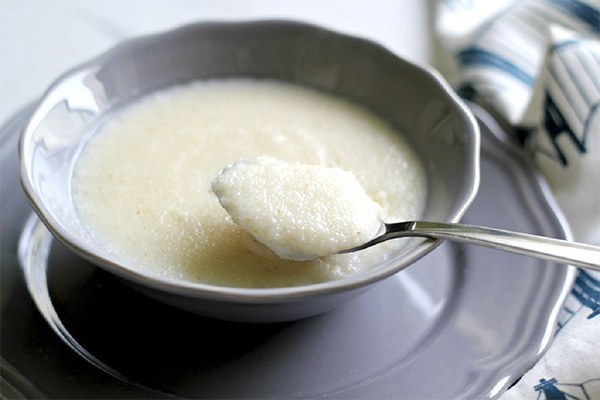
Many have it in the form of a shapeless mass, resembling a thick paste. Such a dish has not only an unsightly appearance, but also a dull taste. Ideal semolina has its own secrets:
- Achieve a good taste of the finished dish can be achieved by diluting the milk taken for the preparation of porridge with water in the proportion of 1:3.
- The optimal consistency of medium-thickness semolina is obtained by boiling it from 1 liter of milk and 6 tablespoons of cereals.
- Before boiling the porridge, the pan intended for this purpose should be rinsed with cold, almost ice-cold water.
With milk
For 200 ml of milk take only 20 g of semolina. In addition to these, the recipe includes:
- 10 g of butter;
- 1 tsp. granulated sugar;
- 10 g white raisins.
In a saucepan with boiling milk, with constant stirring, add the groats and sugar put on the recipe. Then boil it for at least 5-8 minutes. The ready porridge is served hot. Before serving, add a piece of butter to the plate. Gourmets substitute granulated sugar for natural honey in the recipe.
With water
Prepare a dish of 2-3 tbsp of cereal and 0.5 liters of water. To improve the taste, the porridge can be sweetened. To do this it is enough to add 2 tbsp. granulated sugar. In the finished dish put 20 g of butter.
The cooking method is similar to the recipe for making porridge with milk. Thickness of porridge is regulated by the dosage of groats. Pour less than 2 tbsp. into the pot, the porridge will be too thin, and 3 tbsp. will be too thick. The dish is served hot, but before it insist at least 5 minutes. On top you can decorate with fresh berries: raspberries or strawberries.
With milk powder
Powdered milk powder is dissolved in warm water. Take 10 tsp. of Sem or SZM for 2 cups of liquid. Flour takes a mixed variety. For a dish of medium consistency, it is enough to take for the preparation of porridge 50 g of grits. Sugar is added to the porridge to taste.
The mixture of milk powder and water is put to boil on the fire in a metal pot only after the powder is completely dissolved. Lumps are broken with a whisk. Sugar and salt are added to taste to give a pleasant taste to the dish. In this recipe, the semolina is poured into the pot immediately after them. Boil the porridge on low heat, without stopping to stir vigorously.
Once it boils, reduce the intensity of fire and continue cooking for another 5-7 minutes. The ready dish is served hot. On a plate add butter. Along with such porridge it is good to serve hot coffee or cocoa. On top it is sprinkled with coconut shavings or cinnamon powder.
With pumpkin
The vitamin-rich pumpkin is usually cooked with rice, but semolina also makes a delicious porridge. To make 2-3 servings take:
- 250 g pumpkin;
- 60 g of semolina;
- 0.5 l of milk 3.5% fat;
- Sugar to taste.
The semolina and pumpkin are cooked separately. Boil the cereal with milk in the usual way, and the pumpkin chopped into small pieces is stewed in a saucepan for 15-20 minutes. When it is completely steamed, it is mixed with the semolina. The dish is colored bright yellow, evoking a sunny mood. The cane sugar included in the recipe adds spice to the taste of the finished dish.
With banana
To prepare 2-3 servings of porridge take:
- 1 ripe banana;
- 0.5 l of milk with 3.2-3.5% fat content;
- 5 soup spoonfuls of semolina;
- Butter and granulated sugar to taste.
Before cooking, all the ingredients according to the recipe are placed in a blender and chopped to a homogeneous mass. Prepared in a blender mixture is poured into a saucepan, and cook over low heat for 3-5 minutes. Before serving, add cream to the plate. The dish can be decorated with crumbled chocolate.
With cottage cheese
The original, multi-component recipe. Prepare the porridge from 250 g of semolina. This amount of grits is calculated for 1.5 liters of milk and 200 g of cottage cheese with a 9% fat content. To start, boil the semolina in milk with 1 vanilla pod. It saturates the dish with a delicate flavor. Take the porridge off the fire and let it stand under the lid for about 15-20 minutes, then add 4 tbsp. sugar, previously whipped to an airy mass with 4 yolks.
Separately, whisk the whites with 2 tbsp. granulated sugar, 1 tsp. lemon juice and salt. Mix it all with the porridge flavoured with egg yolks and 80 g of white seedless raisins and cottage cheese. Mix the porridge with a wooden spatula until the mass is completely homogeneous. Ready dish put on a plate and garnish with berries.
With raisins
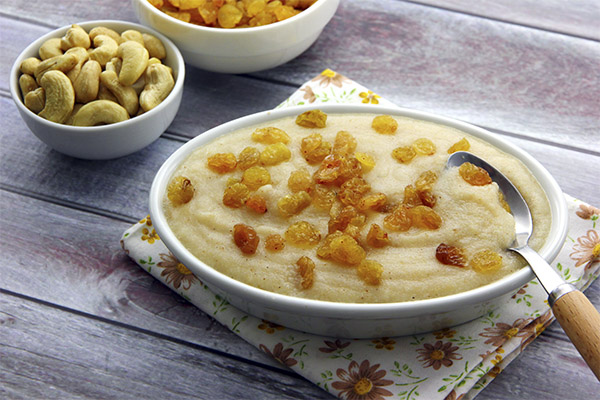
Porridge is made from the following products:
- 0.5 l of milk;
- 2,5 tbsp. semolina;
- 0.5 tbsp. granulated sugar;
- 1-1,5 tbsp. white raisins without seeds;
- Butter to taste.
In a saucepan or saucepan put milk, granulated sugar and butter. All this is brought to a boil, after which a thin trickle of semolina is poured into the pan. The mass is stirred until a homogeneous consistency. Raisins rinsed under running water are added. Everything is stirred again and put on the fire to simmer for 1-2 minutes. Before serving, leave the ready product for 20-30 minutes in a saucepan under a lid to soften and swell.
With apples
To prepare the dish it is better to take winter green varieties of apples. They are rich in iron and strong flavor, which will give the porridge a rich flavor. Prepare porridge from the following products:
- 0.5 l of milk of any fat content;
- 3 tbsp. semolina;
- 1 apple;
- granulated sugar, salt, butter and cinnamon to taste.
Pour the semolina in the hot milk, cook over low heat for a few minutes, then add the ingredients in the recipe to the porridge. Apples are first peeled from the skin and cut into small pieces. Such porridge is good to eat with hot milk. To enhance the taste, you can add to it on the tip of a knife ground vanilla.
Whipped with berries
Whipped porridge is served as dessert. Prepare it with 0.4 liters of water from the following products:
- 100 grams each of strawberries, blackberries;
- 4 tbsp. semolina;
- granulated sugar, vanilla to taste.
The choice of berries for the dish can be different, for example, raspberries and strawberries. In winter, replace fresh berries with frozen ones. Mash boiled in water without lumps and cooled to room temperature is whipped with berries until homogeneous, airy mass. The finished product is a mousse with a lush and delicate structure. The dish can be served at children's parties and adult parties.
With kissel and berries
The dish is served as a dessert or porridge. It is good to give it to children for an afternoon snack or breakfast. The porridge is prepared with milk. The recipe includes the following ingredients:
- 30 g of semolina grits;
- 0.3 l of milk with a fat content of 1.5%;
- 2 tbsp. white raisins without seeds;
- 1 tbsp. cranberries;
- 0.5 l of cherry juice;
- 1 chicken egg;
- 15g corn starch;
- granulated sugar, salt, vanillin.
Boil the porridge in milk with sugar and salt. In the prepared product add raisins, egg and butter to taste. Everything is thoroughly mixed until homogeneous. The rest of the ingredients go to the preparation of the mousse. The porridge is put into silicone molds, give them the form of a fluted ring and bake. After that, the porridge is placed on a plate and poured with cherry kissel. On top, cranberries are added.
With chocolate
This recipe is perfect for capricious children who do not want to eat semolina. To cook 2 servings, take:
- 0.4 l of milk, preferably with a fat content of 1.5%;
- 50 grams of semolina;
- 30 g of chocolate;
- 1 ripe or overripe banana;
- granulated sugar, butter and salt to taste.
Add 1/2 of a banana, mashed with a fork, to milk-cooked porridge. Everything is mixed until tender and homogeneous, and then placed on plates. The remaining half of the banana is cut into circles or small pieces and used to decorate the porridge. Sprinkle chocolate chips on top.
Dzikka
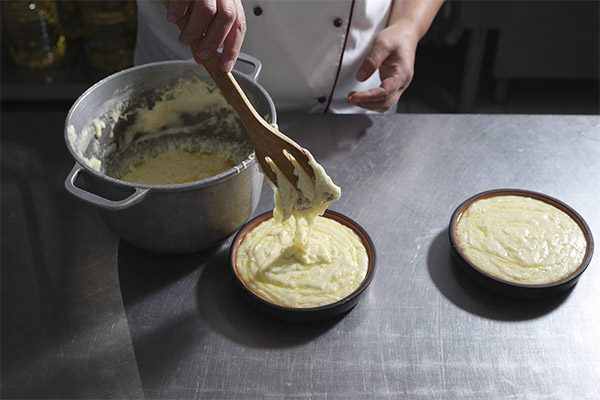
Ossetian recipe for making semolina. In addition to this type of grits, the recipe includes sour cream and flour. In a cauldron heated 1 kg of sour cream, and then add to it 80 g of sifted semolina and 80 g of cornmeal. The mixed mass is salted. It is mixed with 80 grams of sifted semolina and 80 grams of corn flour. Cook on low heat. If desired, one more piece of Ossetian cheese or butter can be added to the dzikka. Eat the dish hot or cold. Season with greens, if desired.
With raspberries or strawberries
This dish is nourishing, full of vitamins. Raspberries are the richest berry. Such semolina is very liked by the kids. The finished product has a bright, rich flavor. The recipe, designed for 0.5 liters of milk with a fat content of up to 3.5%, includes:
- 5 tbsp. semolina;
- 300 g of raspberries;
- granulated sugar, salt, butter to taste.
The ready porridge is placed in molds to cool. The solidified mass is placed on wide plates, garnished with mint leaves, drizzled with raspberry puree and sprinkled with fresh berries. The dish can be served not only to children, but also to adults as a dessert.
For babies
Despite the fact that nutritionists do not recommend giving babies semolina, mothers prefer it to dairy formula. The peculiarity of preparing such porridge is that it is cooked with milk and water, which are taken in a ratio of 1:1. This is the case when a high fat content of the product is harmful. The porridge should have a liquid, homogeneous consistency. The recipe includes:
- 0.5 cup each of milk and water;
- 1 tbsp. semolina.
It is better to take bottled water, and milk - fat content of 1.5%.
Uppa
The traditional Indian dish, analog of the rice vegetable pilaf, only with semolina. It is prepared with the following foods:
- 2 pcs. turnip onions;
- green and red chili peppers;
- 2 tbsp. cashews;
- 2 tbsp. raisins;
- 2 medium sized carrots;
- 4 pcs. string beans.
As spices take 1 ginger, ¼ tsp. mustard seeds. Salt is taken to taste, vegetable oil - 2 tbsp. 1 kg of semolina is fried in a dry cauldron. In separate pans in vegetable oil fry mustard seeds with chili pepper and ginger and finely chopped onion, cashews and raisins. When the onions are golden in color, add the beans and finely chopped carrots to a second pan.
Pour 4 cups of water into the fried mixture with onions and carrots. After the vegetables are steamed, semolina and the mixture from the first pan are added. Everything is mixed until homogeneous and cooked over low heat. Serve for breakfast.
In a multicooker
Boil porridge in the mode "Milk porridge". At first pour milk into the bowl, then pour the grits. Everything is mixed well. Add butter, sugar and salt to taste and mix again. Then close the lid and start the desired cooking mode.
To prevent the formation of lumps during cooking, the porridge is periodically stirred. Unlike the usual way of cooking, semolina in the multicooker does not run away from the stove. The finished product can be garnished with berries or fruit. You can adapt almost any recipe for cooking in the multicooker.
In the microwave
For cooking porridge, only a special dish is used. In it, all the ingredients are immediately mixed until a homogeneous mass. The duration of cooking is set in the mode of heating food. It takes 1 minute. After that, take the porridge out of the microwave, stir thoroughly and load it back into the machine. So do 3 times.
Mannik
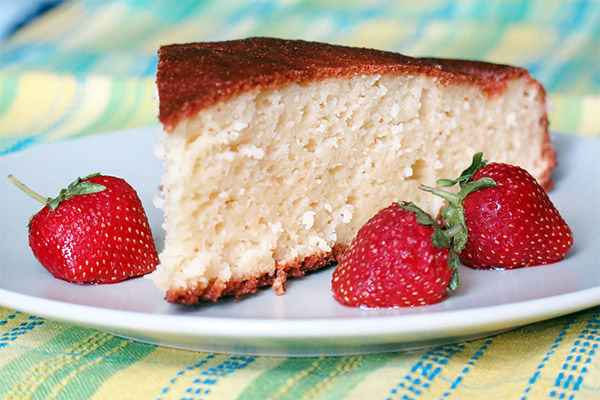
The dish is prepared from the frozen old porridge. Cook it in the microwave from the following products:
- 100 g of porridge;
- 100 grams of flour;
- 100g granulated sugar;
- 100g butter;
- 1 egg;
- baking soda on the tip of a knife;
- Vanilla and salt to taste.
Mix porridge with kefir and leave to swell for 40 minutes. Beat the sugar with the egg and butter. In the resulting mass put flour, vanillin and vinegar-quenched baking soda. After that it is placed in a greased form and put in the microwave. Cook the mannikas at 900 watts power for 6 minutes. At personal discretion, candied fruits, raisins, citrus zest or cinnamon are added to the recipe.
Manna cutlets or meatballs
The dish can be eaten with sour cream or as a side dish to meat or vegetable dishes. Prepare semolina minced meat for cutlets or rissoles from the following components:
- 0.5 l of milk;
- 150 grams of semolina;
- 2 tablespoons of flour;
- 1 egg.
First boil thick porridge with water. When it cools, add an egg and flour, salt and pepper to taste. Thoroughly mix the mass. Form cutlets or meatballs, roll them in breadcrumbs and fry in a pan with hot oil until golden brown. Serve the dish with sweet and sour fruit sauce. Ideal for its preparation are cranberries or cranberries. In ancient Russia, such cutlets and rissoles were eaten with rhubarb sour cream.
Semolina pudding
The taste of the dish is largely determined by the additional ingredients. The ingredients include bananas, apples, candied fruits, nuts, and vanilla. This list of ingredients can be changed and dosed at your discretion. Among the mandatory ingredients are:
- 0.5 liters of milk;
- 100 grams of semolina and pitted prunes;
- 2 tablespoons of semolina;
- 20g of butter;
- 2 eggs;
- 2 g of citric acid.
To the thick semolina, prepared according to a classic recipe, add the yolks, soaked and chopped into small pieces prunes. Thoroughly mix the mass, then add whites, beaten to an airy foam. Bring the mixture to readiness in a water bath. Serve this dish with sour cream. The pudding can be topped with melted chocolate or fruit jelly. Grated chocolate is good as a sprinkle.
What do you eat semolina with?
It is usually eaten sweet - with sugar, honey, jam, berries and dried fruits.
At what age can children be given semolina
Excessive consumption of semolina by children can cause digestive system disorders and cause various diseases. Offering semolina to children, parents should observe the following rules:
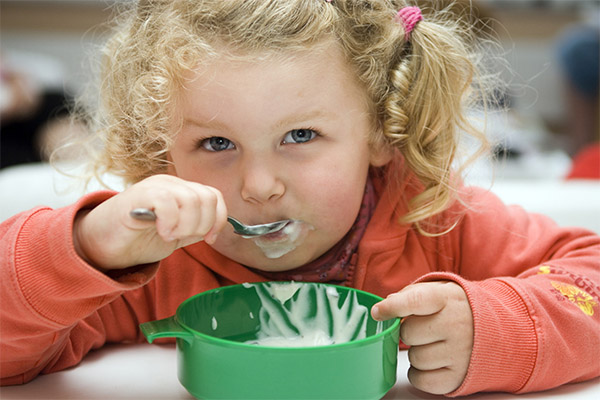
- Do not feed it to a child under one year. The proteins and starch it contains can cause rapid weight gain and early obesity. Nutritionists recommend to begin giving it to children after 3 years. An exception may be made for children suffering from dystrophy.
- The norm of a single consumption of semolina for children under 3 years old should not exceed 50 g. It can be included in the diet no more than 2 times a week. After 3 years of age, children can increase a single portion of porridge to 75-100 grams.
The benefits of semolina for children
The chitinase (a special enzyme) contained in the product participates in the metabolic process. Porridge contains a lot of iron, so it is a good preventive measure against anemia.
Harm of semolina for children
Children's body is negatively affected by the gliadin contained in semolina. It affects the intestinal pile and makes it difficult for the body to absorb useful substances. Gluten thins the children's intestinal mucosa, which leads to problems of absorption of vitamins and micronutrients. In children, porridge can cause diarrhea and cause calcium deficiency.
«Important: All information on this site is provided for informational purposes only. purposes. Consult with a health care professional before using any recommendations. specialist. Neither the editors nor the authors are liable for any possible harm caused by materials."

